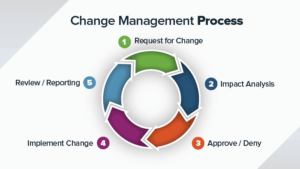Understanding the Importance of Preparation for AI Adoption
In the context of AI adoption, preparation encompasses a range of elements vital for successful implementation. One of the most critical components is the readiness assessment, which involves evaluating an organization’s existing infrastructure, workforce capabilities, and overall alignment with AI objectives. This initial stage helps to identify gaps that need to be addressed before deploying AI technology. A thorough readiness assessment ensures that companies are not only aware of their current strengths but are also equipped to tackle potential challenges.
Strategic planning is another essential aspect of preparation for AI adoption. Organizations must develop a comprehensive strategy that outlines the objectives, anticipated outcomes, and a roadmap for AI implementation. This strategy should include stakeholder engagement, establishing clear metrics for success, and a focus on the desired business impact. By integrating strategic planning into the preparation phase, organizations can set realistic timelines and clarify roles and responsibilities, thereby facilitating a smoother transition to AI-enhanced operations.
Resource allocation significantly influences the success of AI adoption efforts. Effective preparation demands that organizations allocate the necessary financial, human, and technological resources to support the implementation process. This may involve investing in training programs for employees to equip them with the skills required for operating AI systems, as well as ensuring that appropriate technological infrastructure is in place. Without adequate resource allocation, organizations may find themselves constrained in their ability to leverage AI solutions effectively, resulting in suboptimal outcomes.
In conclusion, a comprehensive understanding of the importance of preparation—encompassing readiness assessment, strategic planning, and diligent resource allocation—is a prerequisite for successful AI adoption. Organizations that prioritize these elements can mitigate common pitfalls associated with inadequate preparation and position themselves to harness the full potential of artificial intelligence in their operations.
Developing a Comprehensive AI Adoption Strategy
To effectively adopt artificial intelligence (AI) within an organization, it is crucial to develop a comprehensive adoption strategy that aligns with your overall business goals. This strategy should consist of several critical components that ensure a systematic approach to AI implementation. The first step involves identifying business objectives. Organizations must evaluate their specific needs and define what they hope to achieve with AI, whether it is improving efficiency, enhancing customer experiences, or driving innovation.
Once the business objectives are clearly articulated, the next step is selecting appropriate technologies. There is a wide array of AI tools and platforms available, and decision-makers must evaluate solutions based on their compatibility with the identified objectives. Factors to consider include scalability, ease of integration with existing systems, and the availability of required data. It is essential to opt for technologies that not only address current needs but can also evolve with the organization’s growth.
Engaging stakeholders from different departments throughout the process is equally vital. Collaboration between IT, operations, marketing, and other relevant units can provide a holistic view of the capabilities and limitations of AI technologies. Stakeholder engagement helps in gaining valuable insights, which can refine the adoption strategy. Furthermore, ensuring that all teams involved are on board and understand the purpose of AI adoption fosters a culture of innovation and reduces resistance to change.
By comprehensively addressing these components—business objectives, technology selection, and stakeholder engagement—organizations can create a robust AI adoption strategy. Such a prepared approach not only increases the chances of successful implementation but also maximizes the potential impact of AI on the overall business ecosystem.
Building the Right Infrastructure and Skill Set
Successful adoption of artificial intelligence (AI) necessitates a robust infrastructure and a well-defined skill set. To facilitate effective AI deployment, organizations must invest in the appropriate data management systems that can handle large volumes of data efficiently. This involves not only selecting the right software solutions but also ensuring that the underlying hardware can support various AI processes, including machine learning algorithms and analytics. The integration of cloud computing can prove beneficial, offering scalable resources for computational tasks, which is crucial for organizations with fluctuating processing needs.
Moreover, a well-structured data strategy is essential. Organizations should prioritize data quality, accessibility, and security. This includes establishing data governance policies that delineate roles and responsibilities for data stewardship. By maintaining a solid foundation of clean and reliable data, businesses can enhance the effectiveness of AI applications and improve decision-making processes.
In addition to technical infrastructure, the human element plays a pivotal role in successful AI adoption. Investing in training and development for employees is imperative to bridge the skill gap prevalent in many industries. Organizations should identify key competency areas and provide targeted training programs that enhance employees’ understanding of AI and its applications. Such programs can also promote an innovative mindset that encourages employees to explore new technologies and methodologies.
Fostering a culture that embraces AI and technology is equally important. This culture should encourage collaboration and experimentation, allowing employees to feel confident in applying AI solutions within their roles. Leadership plays a crucial role in this aspect, as leaders must advocate for and support AI initiatives, demonstrating the value that these technologies can bring to the organization. Ultimately, the combination of a strong infrastructure and a skilled workforce will lay the groundwork for successful AI deployment and long-term organizational growth.
Assessing and Measuring Success Post-Adoption
Once an organization has adopted artificial intelligence (AI) technologies, the next pivotal step is to assess and measure the success of these initiatives. This phase is critical as it allows businesses to evaluate the actual impact of AI solutions against the goals originally set. To facilitate this evaluation, it is essential to establish measurable objectives and key performance indicators (KPIs) before the implementation of AI systems. Properly defined KPIs serve as a benchmark for assessing how effectively AI is meeting the intended business outcomes.
Various tools and methodologies can assist organizations in monitoring the progress of their AI initiatives. For example, leveraging data analytics platforms can provide insights into performance metrics and other relevant data points. These insights allow stakeholders to visualize how well the technology aligns with defined objectives. Additionally, gathering feedback from end-users and team members can provide qualitative data that complements quantitative measures. Such feedback can help identify any operational challenges or user experience issues, highlighting areas for improvement.
An essential aspect of this post-adoption assessment lies in the need for businesses to remain adaptable. AI technologies can evolve rapidly, so maintaining flexibility is crucial. Organizations should be prepared to make necessary adjustments based on performance data and feedback, ensuring alignment with strategic business objectives over time. This re-evaluation process should be ongoing, fostering a culture of continuous improvement in AI integration.
In conclusion, the assessment and measurement of AI success post-adoption necessitate careful planning and execution. By setting clear goals, utilizing appropriate tools, and encouraging direct feedback, organizations can enhance the effectiveness of their AI initiatives while evolving alongside technological advancements in the years to come.



















